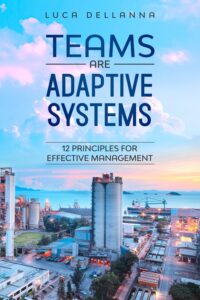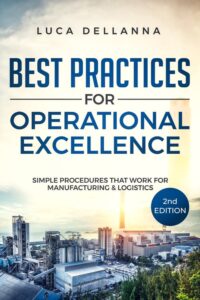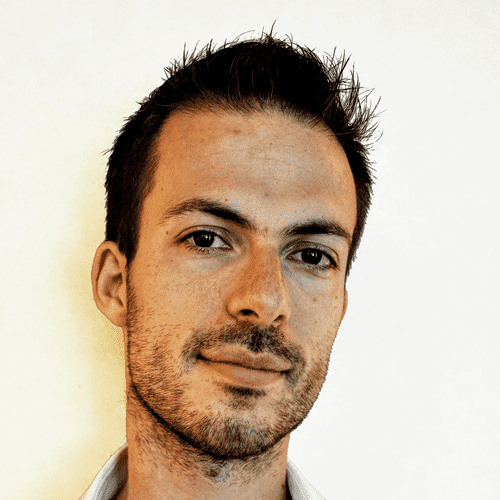Luca's monthly newsletter, on IQ, ethics, solving the right problem, and much more.
Quotes of the month
Optionality
“Without optionality you are chained to the limits of your present imagination.” – Alsek Dreams (link)
An implication is: do not assume you know everything, and make sure that you have enough flexibility and optionality to react positively to what you do not know.
Another implication: prevent downside rather than predicting it. Expose yourself to upside rather than predicting it.
Fat tails
“[The recent week in which the electric grid in Texas froze] changed the average electricity price since 2010 from $30.5 to $43.6, a 42% jump. That’s a lot of market “savings” evaporated in a moment.” (link)
I do not know enough about electric grids to comment on Texas’ approach, and of course, electricity price is not everything that matters. That said, it’s interesting that often “efficiency gains” are actually “inefficiencies delayed” (as someone pointed out in my Twitter feed, but I cannot find the tweet anymore.) It is something that can and will happen in fat-tailed domains, unless we take precautions.
(What’s a fat-tailed domain? “Fat tails is when most number of statistical properties are generated by smallest number of observations.” – Nassim Nicholas Taleb, link. That is, when a small sample is not enough to describe the properties of a distribution, such as electricity prices in 2010-2020.)
Alignment
I’ve stumbled upon this story of how, at the 2000 Sydney Olympics, the British rowing team unexpectedly won the Men’s Eight Rowing gold medal. Apparently it did so by obsessively asking, for anything anyone did: “Will it make the boat go faster?” (Including the cook choosing the next meal, the person booking the airplane, the athletes choosing what to drink, and so on.)
Asking the same fundamental question over and over, everywhere and for everyone, is a powerful tool for alignment.
Alignment is not just a buzzword but a necessary element to fight homeostasis. Let me explain.
If a new technology doubles productivity, employee output increases but doesn’t double. The employee reinvests part of the saved time in other activities – such as sending one extra report or sitting in one extra meeting. I call “productivity homeostasis” the human tendency to use productivity gains at one activity to spend less time doing that activity (keeping output constant) and more doing other activities.
Back to alignment. Non-aligned teams focus on “hitting the minimum target” and tend to pass any opportunity for surplus, preferring to engage in non-core activities (such as thinking about politics or their life outside the team). Example: a non-aligned rowing team who has a good shot to the gold medal would optimize a meal for tastiness rather than rowing performance. Conversely, aligned teams take opportunities for surplus and are less likely to fall prey to productivity homeostasis. They would always take the meal that increases their chances of success.
Hence, the power of asking the same fundamental question over and over, everywhere and for everyone. Will it make the team stronger?
(Note that the question has to be broad enough to prevent situations in which over-optimization is harmful.)
Walls
I didn’t know that walls were made like this (picture link). David Galbraith explains why (link).
Predictions
“To predict, find events that have certain occurrence with uncertain timing (as fragile will break) rather than the other way around.” – Nassim Nicholas Taleb (link)
An implication is: if there’s a chance it breaks, don’t try to predict whether it will break or when but assume it will and take the necessary precautions.
Another implication is: live long enough to benefit from the law of large numbers. For example, stocks historically had a positive expected return – but this is only true over long enough time frames. You want to make sure that you are positioned so that you have a certainty of being there for a long enough time frame.
Positive-sum
“Competitors in your space raising a lot of money is almost always a net positive thing for your startup.” – Sara Mauskopf (link)
This is, of course, because competitors raising lots of money might mean two things. One, they are good. Two, business in your space is good (it could be for many reasons: the market is growing, the economy is good, and so on).
It is often beneficial to be “selfishly selfless” and grow your field together with growing your business.
Localism
“Localize your dependencies.” – Joe Norman (link).
One implication: bring what you depend on close to you, so that you know it better, you make it simpler (no chain of intermediaries), and you both have part of skin in the same game (your city, for example).
Another implication: make sure that you don’t depend on what isn’t close to you.
Essay: Yields Changes And How To Measure Them
Let’s say I never baked a cake before. What’s the expected value of myself baking one? It’s a bad cake. But what’s the expected value of myself baking 20 cakes? 5 bad cakes and 15 good ones, as I learn how to make them. Often, yields change over time. This is a well-known phenomenon studied under the umbrella of ergodicity (link to more examples).
Here’s something interesting, though. The thing that caused yields to rise – learning – is not evident in the short-term. A person that only observed me baking my first bad cake would naively extrapolate that, if I continue, I’ll bake bad cakes. However, that would be wrong. In many activities, yield can change over time. If we want to know how yields change, we must measure what makes them change.
Let’s make another example – a hospital that specializes in treating COVID patients. Let’s say it has a capacity of 100 beds. The first patient to get cured there has, say, a 99% chance of recovery. However, a patient that comes later, when the hospital is overcrowded, might have a lower chance of recovery, as doctors & other medical resources are thinly spread and the amount of virus in the building increase. Patients being cured affect the chance of other patients being cured.
In both examples described above – one positive and the other negative – yields change over time.
Now, let’s make a final example – compounding. If you have a $100 investment that yields a 10% return, the first year it yields $10, the second $11 (10% of $110), and so on. This example is similar to the previous ones for yields change over time. However, differently from the previous ones, the change is here evident from the short-term. The measured short-term yield (the $10) is what affects the long-term yield. Instead, in the baking example and in the hospital one, what affected the long-term yield wasn’t measured in the short-term.
Hence, the point of this essay. Know what affects the change in long-term yields and measure it. This is banal but few take action on it – or only do when obvious, such in the case of financial compounding.
How to do it? There is this idea, relatively common in entrepreneurship, of “know your business formula.” For example, a restaurant’s would be: profit = daily clients * (average meal price – average meal cost). So far, so good.
However, you do not want to only measure how these factors change over time, but you also want to measure what influences them. For example, do not just measure daily clients but also measure average review score (something that might influence how the amount of daily clients changes over time.)
You can go one step deeper. What influences average reviews? Perhaps, the training of the waiters. Measure that.
Know what affects the change in long-term yields and measure it.
My February Twitter threads
- Is Autism a two-tailed spectrum?
- Trolley problems
- Thoughts on herd immunity
- Coin-flip bets and why people (correctly) refuse them
- The hidden side of non-ergodicity
Personal Updates
Events & courses
I’ve opened the registrations to the April 2021 cohort of my Antifragile Operations cohort-based course. It begins on the 5th of April (registration link). Here is a review of my last course: “Luca continues to demonstrate a clarity of thought and ability to simplify complex issues with his Adaptive Systems Course. The value he provides in this course is very high, and the knowledge immediately actionable on a personal and business level. Do not miss this opportunity!” – Ben Moore
Long-form essays
I’ve recently published a long essay on 23 tips for a better career as an employee (link). This month has been crazy busy, but I plan to be back to writing more long-form essays in March.
New Roam Book: This Is Management
Earlier this week, I published my 2nd Roam Book, called “This Is Management” (link). Its contents come from my previous two books on management (link1, link2), packaged as a Roam Book (explanation). It’s also available in Obsidian format (link).








